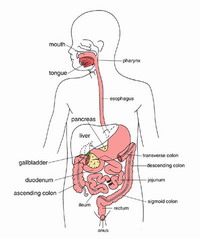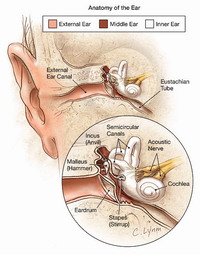Login form
Science
Cells
 All plants and animals are made of cells. Most cells are much too small to see. It takes millions of cells, for example, to make just one of your fingers. Some tiny creatures, such as bacteria, are made of only one cell.
All plants and animals are made of cells. Most cells are much too small to see. It takes millions of cells, for example, to make just one of your fingers. Some tiny creatures, such as bacteria, are made of only one cell.
If you want to see what a cell looks like, you could use a microscope. Or, you could get an egg. A bird’s egg is actually a single, giant cell. The eggs you eat for breakfast come from chickens.
AN EGG IS A CELL
An egg is a very big cell. Take a look at an egg that has been broken into a bowl. One of the first things you see is a yellow center. You call this center the yolk. Biologists call it the nucleus of the cell. Almost all cells have a nucleus.
Digestive System
 You eat when you get hungry. It seems so simple. You take a bite out of a sandwich.
You eat when you get hungry. It seems so simple. You take a bite out of a sandwich.
That bite then begins an amazing journey. That bite goes through every part of your digestive system. Your body digests, or breaks down, the food into smaller and smaller parts. At the end of the journey your blood carries chemicals from your sandwich to every part of your body.
WHAT IS YOUR DIGESTIVE SYSTEM LIKE?
Your digestive system is one long, winding tube. The digestive system of a grown-up is 20 to 30 feet (6 to 9 meters) long.
Ears and Hearing
 You have an ear on each side of your head. Your ears let you hear sounds. You can hear music and other nice sounds. You can hear sirens and other warning sounds.
You have an ear on each side of your head. Your ears let you hear sounds. You can hear music and other nice sounds. You can hear sirens and other warning sounds.
Your ears do something else very important. They help you keep your balance. You can walk and ride a bike without falling over because of your ears.
HOW DOES SOUND WORK?
Anything that moves back and forth makes sound. Moving back and forth is called vibrating. Pluck a guitar string and watch it vibrate back and forth. The vibrations make sound waves.
Disease
 “Is it catching?” People sometimes ask this question when they hear that someone is sick. They are talking about a kind of human disease. The kinds of diseases that are contagious (catching) are caused by microscopic germs. Diseases caused by germs are called infectious diseases. Other human diseases can be caused by many things.
“Is it catching?” People sometimes ask this question when they hear that someone is sick. They are talking about a kind of human disease. The kinds of diseases that are contagious (catching) are caused by microscopic germs. Diseases caused by germs are called infectious diseases. Other human diseases can be caused by many things.
WHAT DISEASES DO GERMS CAUSE?
Pneumonia, strep throat, and food poisoning are some of the diseases caused by germs called bacteria. Bacteria are living things made of just one cell.
Exercise
 People exercise to keep healthy. They exercise to lose weight or to stay fit. They exercise to make their muscles bigger and stronger. Maybe you play soccer or some other sport for exercise. Getting exercise can be fun and can make you feel good.
People exercise to keep healthy. They exercise to lose weight or to stay fit. They exercise to make their muscles bigger and stronger. Maybe you play soccer or some other sport for exercise. Getting exercise can be fun and can make you feel good.
Exercise is a big part of staying physically fit. People who are physically fit are alert and full of energy. Exercise can also help people handle stress. Exercise is especially good for children, teens, and older persons.
NOT ALL EXERCISE IS THE SAME
There are two main types of exercise: aerobic and anaerobic. Aerobic exercise works big muscles in your arms and legs.
